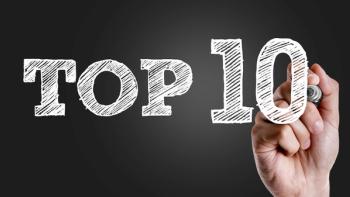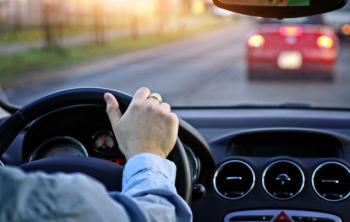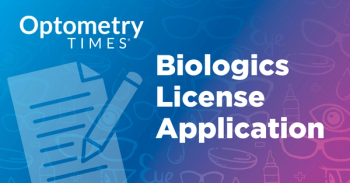
Benefits of bandage contact lenses plentiful
Therapeutic bandage contact lenses (CLs) can be successfully used in the management of a variety of corneal and anterior segment disorders, said Valerie Seligson, OD, here at the 5th annual Evidence Based Care in Optometry conference.
Baltimore-Therapeutic bandage contact lenses (CLs) can be successfully used in the management of a variety of corneal and anterior segment disorders, said Valerie Seligson, OD, here at the 5th annual Evidence Based Care in Optometry conference.
Clinical proof
Several clinical studies have shown that a variety of bandage soft CLs are safe and effective, according to Dr. Seligson. Lim et al. (CLAO J. 2001;27:179-185), for example, conducted a trial in 54 consecutive patients to assess the efficacy of a bandage soft CL (PureVision, Bausch + Lomb Inc) for filamentous keratopathy, corneal perforation or laceration, stromal melting, recurrent corneal erosion, epithelial defect due to trauma or chemical burn, bullous keratopathy, persistent epithelial defect, post-penetrating keratoplasty, and post-photorefractive keratectomy (PRK).
In 40 patients with corneal wounds, 96% had improved healing, while 83% experienced full healing with the bandage soft CL. For pain relief (n = 28 eyes), the bandage soft CL brought full pain relief in 96% and partial pain relief in 4%. The bandage soft CL provided 100% corneal protection with only 1 complication, which was comprised of culture negative corneal infiltrate, and 1 patient with poorly fitting contact lens.
Guard against infection
"A major downside of using a bandage lens is getting an infiltrate. It's very rare, less than 1% to 2%," said Dr. Seligson. "To prevent this when using any bandage soft CL, patients must be seen often and the lens used only short-term (3 to 30 days). Patients must also be educated on the signs and symptoms of infection, and told to call immediately if they develop."
Researchers of a larger prospective study (Eye Contact Lens. 2004;30:63-67) assessed the use of a bandage soft CL (Night & Day, Ciba Vision) in 70 patients, 47 of whom had bullous keratopathy. Lenses were used for 7 to 30 days as continuous wear, with 91% showing improvements in healing and 94% rating their comfort as good.
Newer studies, newer CLs
In another more recent study in 100 patients who underwent PRK (J Cataract Refract Surg. 2005;31:681-686), researchers did a masked comparison of silicone hydrogel lotrafilcon A (Night & Day [8.4/8.6 base curve, 13.8 diameter], Ciba Vision) and etafilcon A (Acuvue 8.4/8.8, 14.0, Vistakon Inc.) extended-wear bandage CLs after PRK. Patients were fitted with 1 of each lens post-PRK. The lotrafilcon A lens resulted in faster corneal re-epithelialization and reduced subject patient discomfort in most patients during the first 48 hours after PRK. Dr. Seligson noted that this study was conducted with the Acuvue etafilcon A CL; Acuvue now has a therapeutic bandage CL (Acuvue Oasys, Vistakon Inc.) made of senofilcon A, which would most likely have a different outcome, she said.
In the final clinical trial cited by Dr. Seligson (Am J Ophthalmol. 2000;130:25-32), researchers studied a rigid gas permeable scleral CL in 49 consecutive patients (76 eyes). Patients had Stevens-Johnson syndrome, exposure keratitis, superior limbic keratoconjunctivitis, Sjögren's syndrome, and inflammatory corneal degeneration. A full 92% of patients had improvement in quality of life due to reduction of their discomfort and photophobia. Patients in the trial were able to wear these scleral lenses from 4 to 18 hours, and the mean wearing time of these lenses was 13.7 hours per day.
"Studies show that the bandage is most often used with disposable soft [CLs] for short-term use and, on average, 91% of patients achieve clinical success," Dr. Seligson said in conclusion. "Lens failure was most likely due to dry eye, lens loss, CL deposit, and rarely, corneal infection."
FYI
Valerie Seligson, ODPhone: 410/310-2330
E-mail:
Dr. Seligson has no financial disclosures.
Newsletter
Want more insights like this? Subscribe to Optometry Times and get clinical pearls and practice tips delivered straight to your inbox.













































